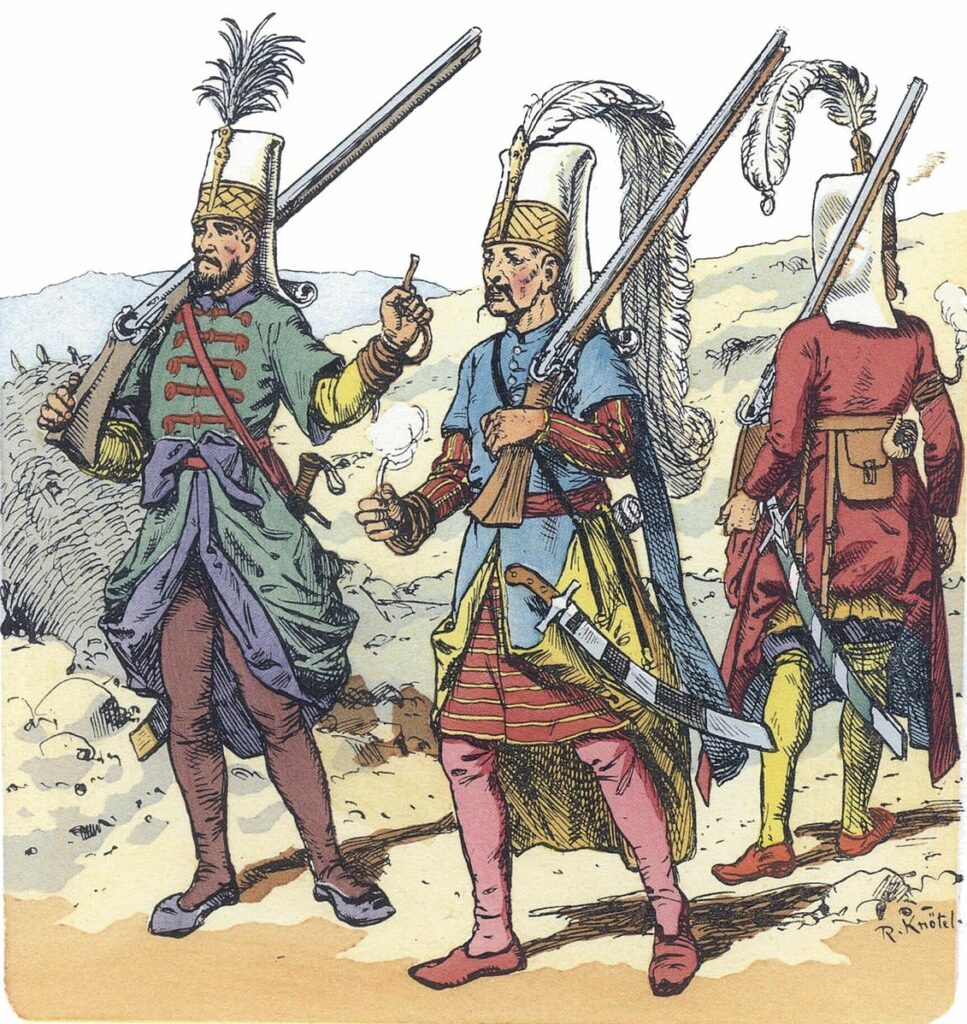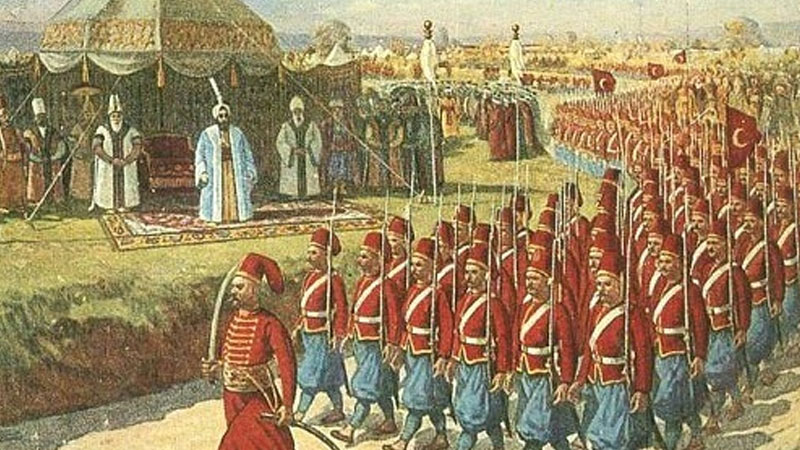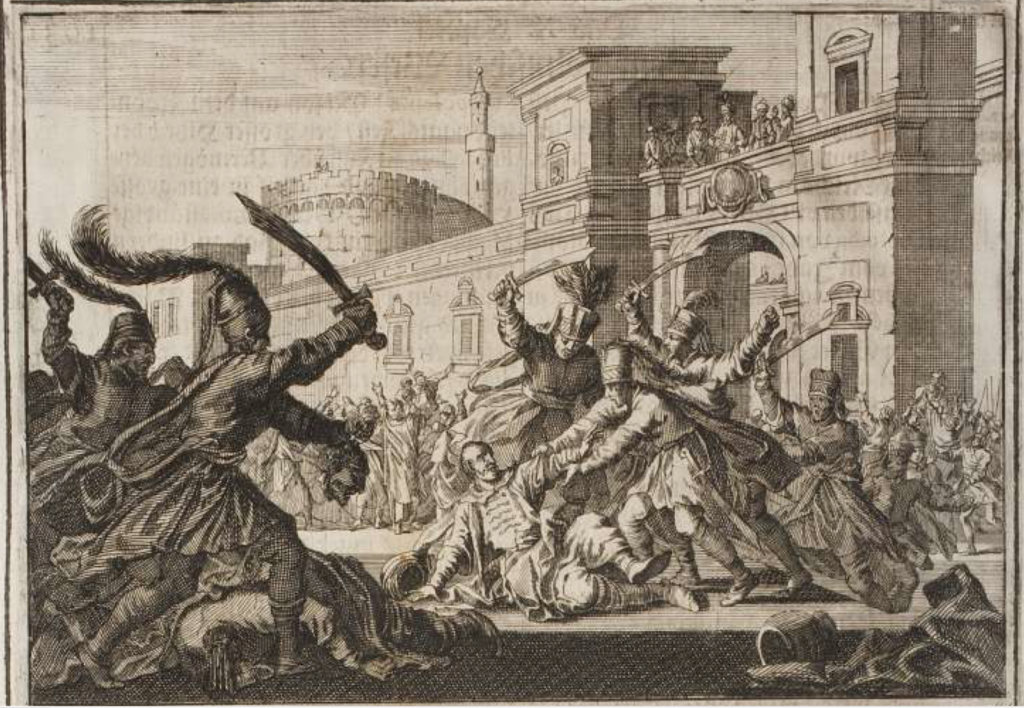Military history is filled with tales of elite groups of fighters that stand apart from the regular military. Exceptional fighters who have proven themselves in battle.
These groups were called on for special missions. They had reputations for being the best of the best and were known worldwide. They struck fear into their enemies.
Examples range from the indomitable Roman Centurions and Spartan warriors, to today’s elite military groups like the Navy SEALS and Delta Force.
Among these legendary groups, the Janissaries of the Ottoman Empire stand out as one of the most feared and respected military forces in history. Not only were they highly skilled warriors but they were trained and educated in other fields such as science, history, and literature.
In this article, we will explore the fascinating history of the Janissaries and the mark they left on military training today.

History of Janissaries
The Janissaries, known as the Yeniçeri in Turkish, can trace their origins to the early years of the Ottoman Empire. They were established during the reign of Sultan Murad I in the late 14th century.
The Janissaries were initially a small and elite force composed of enslaved Christian youths. These young recruits, known as devshirme, were taken from the empire’s Christian territories, converted to Islam, and trained for military service.
Originally created as personal bodyguards for the Sultan, the Janissaries quickly evolved into a powerful military force with significant political influence. Their role rose above and beyond those of the traditional infantry. They became a versatile force employed in various campaigns, both within and beyond the Ottoman borders.
The Janissaries played a crucial role in several key events throughout Ottoman history. One notable example is the capture of Constantinople in 1453. This brought about the end of the Byzantine Empire.
Their presence in major battles and campaigns, such as those against the Safavids and the Habsburgs, further solidified their reputation as a highly skilled and brutal military force.
Recruitment and Training
The founding of the Janissaries lay in the strategic and controversial method by which they were recruited. This was known as the devshirme system. It involved the drafting of young Christian boys, usually between the ages of 8 and 18, from the empire’s Christian provinces.
These young recruits were often taken from impoverished families or orphanages. There were several advantages to this system that benefited both the empire and the new recruits:
Loyalty to the State: Selecting recruits from poor families or orphans meant that these individuals often had weaker ties to their own communities and families. This reduced the likelihood of divided loyalties and ensured that the Janissaries would be more dedicated to the Ottoman state.
Social Mobility: The devshirme system offered a chance for individuals to rise above their socio-economic circumstances. It provided an opportunity for upward social mobility that they would never have on their own.
By joining the Janissaries, these recruits could rise through the ranks based on merit, achievements, and loyalty to the Ottoman state. This gave opportunities to those who would have otherwise spent generations in poverty.
Strategic Advantage: Poor families often lacked the resources to provide education or opportunities to their children. By selecting recruits from economically disadvantaged backgrounds, the Ottoman Empire could shape and mold them to its specific needs.
Reduced Opposition: Conscription from poor families or orphanages helped minimize opposition to the devshirme system. Families in dire economic circumstances might see the recruitment as a chance for their children to escape poverty.
Additionally, orphans without familial ties had fewer advocates to challenge the system. This made it easier to implement.

Training and Education
During their training, the Janissaries received more than just a military education. They were known for their knowledge in various fields including science, history, and literature.
This created a well-rounded force capable not only of executing military strategies but also of comprehending the world around them and adapting to changing times.
Scientific Knowledge
Janissaries were taught a foundational understanding of scientific principles. This knowledge included aspects of mathematics, astronomy, and engineering. This allowed them to navigate and contribute to the technological advancements of their era.
History and Literature
The Ottoman Empire understood that those who don’t know history are doomed to repeat it. The Janissaries’ education encompassed a study of historical events.
This helped inform their decision-making on the battlefield. Literary training enhanced their communication skills and provided a cultural context that enriched their overall perspective.
Cultivation of Leadership Qualities
The emphasis on education within the Janissary system went beyond acquiring knowledge. It aimed at nurturing leadership qualities.
Janissary officers, known as “cehnedar,” were expected to demonstrate not only military expertise but also a deep understanding of politics, diplomacy, and cultural nuances. This combination of skills allowed them to serve not just as warriors but also as leaders in the Ottoman Empire.
Notable Campaigns and Achievements
The Janissaries played a pivotal role in numerous key battles throughout the history of the Ottoman Empire. Their disciplined and well-trained ranks combined with their reputation across Europe made them a formidable force on the battlefield.
Battle of Nicopolis
One of the notable campaigns in which the Janissaries brought victory to the Ottoman Empire was the Battle of Nicopolis in 1396. The Ottoman forces, under the command of Sultan Bayezid I, faced off against a combined army of European powers seeking to halt Ottoman expansion into Europe.
The European coalition was primarily composed of French, Hungarian, and Burgundian armies. Despite having a larger army, the European coalition lacked the training and coordination that the Janissaries possessed and were swiftly defeated.
Battle of Mohács 1526
Another significant battle was The Battle of Mohács, fought on August 29, 1526. Sultan Suleiman the Magnificent, hungry to expand the reach of the Ottoman territories into Central Europe, launched a military campaign against the Kingdom of Hungary.
The Hungarian army, led by King Louis II, was vastly outnumbered and outdated in their training and weapons. The highly skilled Janissaries made quick work of the Hungarian army and took control of a large swath of Hungary’s territory.
This victory paved the way for further Ottoman expansion into Central Europe. This marked the beginning of a period of Ottoman dominance in the region.
The defeat also had political repercussions. King Louis II was killed on the field of battle. This created a power vacuum and triggered succession disputes within the Kingdom of Hungary.
Political Influence
The Janissaries’ unique status as educated warriors gave them considerable power and respect that extended beyond the battlefield. Over time, they began to have more and more influence in the political landscape of the Ottoman Empire.
They often intervened in diplomacy and matters of the state. Their loyalty to the sultan, coupled with their military training, made them a force to be reckoned with. They often swayed political decisions in their favor.
Their involvement in politics was a double-edged sword. While their influence brought stability and strength to the empire, it also led to periods of political unrest and internal strife.
Corruption, Downfall, and Reforms
With many victories under their belt, fear, and regional respect led the Janissaries to have an inflated sense of self-worth. The power they wielded went to their heads.
This made them less disciplined. They engaged in corrupt practices and exerted their influence in political matters. This made them less effective on the battlefield and began to erode the reputation that was carefully crafted over generations.
In the early 19th century, Sultan Mahmud II had had enough of the Janissaries. He initiated a series of military and administrative reforms known as the Tanzimat reforms.
The Janissaries viewed the reforms as a threat to their power and privileges and actively resisted them. In response, Mahmud II took decisive action, leading to the infamous Janissary revolts.
The Janissary Revolts
Between 1826 and 1828, the Janissary stood up and revolted against the Sultan and his reforms. Mahmud II was not one to back down from a fight. He knew that the Janissaries did not possess the military prowess of generations before.
They had become entitled, complacent, and in some cases, lazy. Mahmud II, determined to modernize the Ottoman military, quelled the revolts through force.
The once-mighty corps was disbanded, and many of its members were either executed or imprisoned. This marked the end of the Janissary era and the closure of a significant chapter in Ottoman history.

Legacy of Janissaries
The legacy of the Janissaries resonated through centuries and reached far beyond the confines of the Ottoman era. Their impact is evident in various aspects, ranging from cultural influences within Ottoman society to shaping military structures worldwide. They left lasting impressions on modern Turkey.
The Janissaries are considered pioneers in military training methods, discipline, and ability to adapt to modern technology. The concept of a standing army was a hallmark of the Janissary system which influenced military structures all over the world.
Although the Janissaries were officially disbanded in the early 19th century, their legacy continues to resonate in modern Turkey. The Janissaries left an imprint on Turkish identity, and their memory is preserved in historical narratives, literature, and popular culture.
References
Janissary
https://en.wikipedia.org/wiki/Janissary#
The Rise And Fall Of The Janissaries, The Ottoman Empire’s Elite Military Force
https://allthatsinteresting.com/janissaries
Devshirme | A tradition of Elite Training & Slavery

